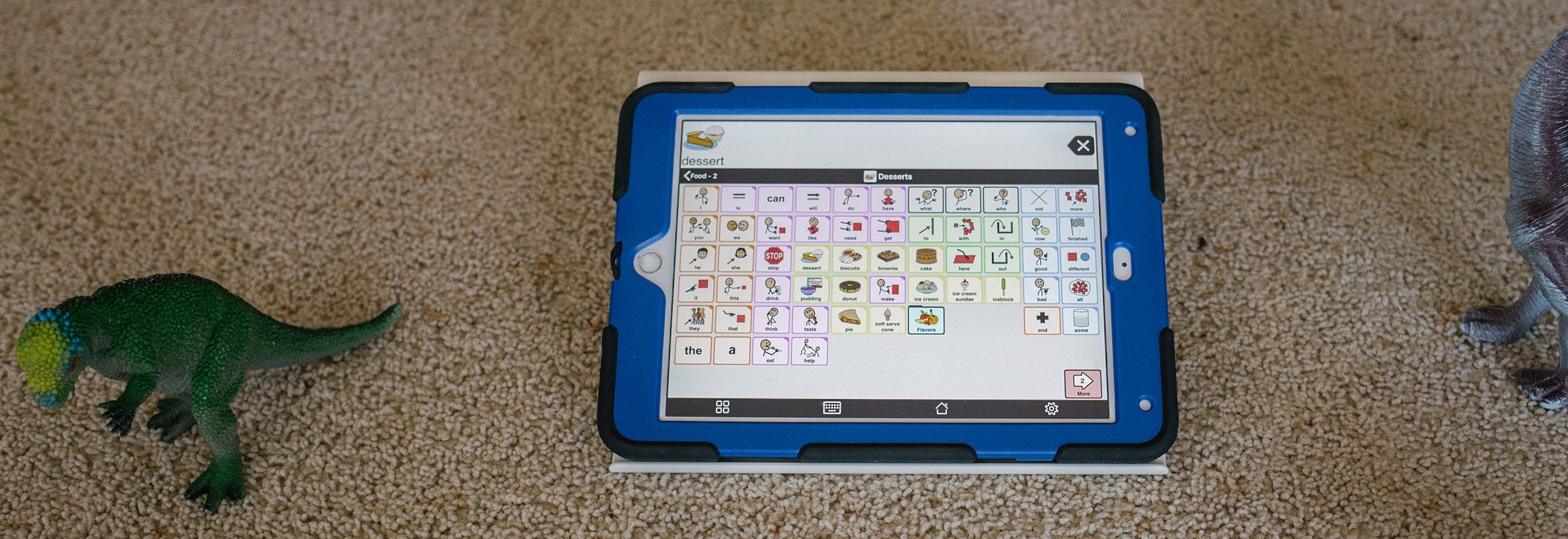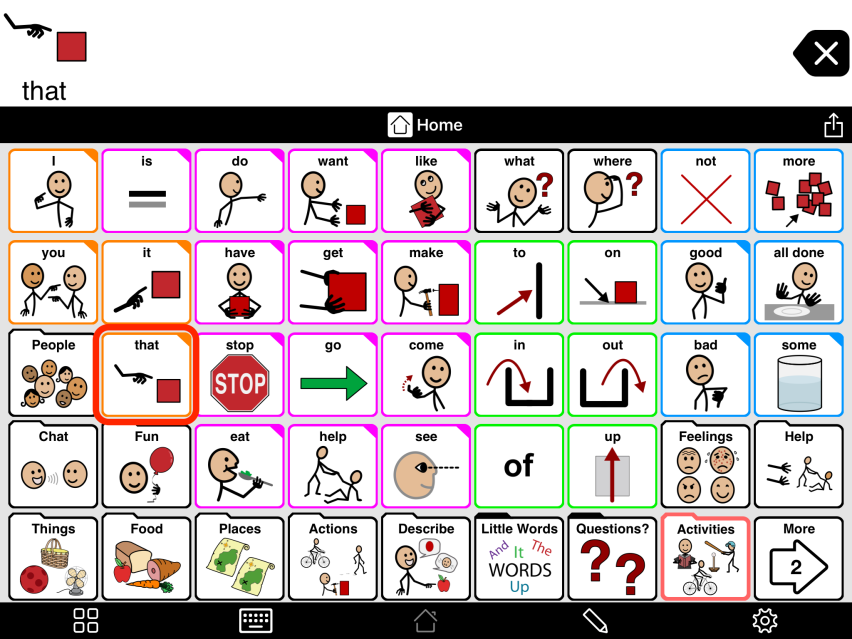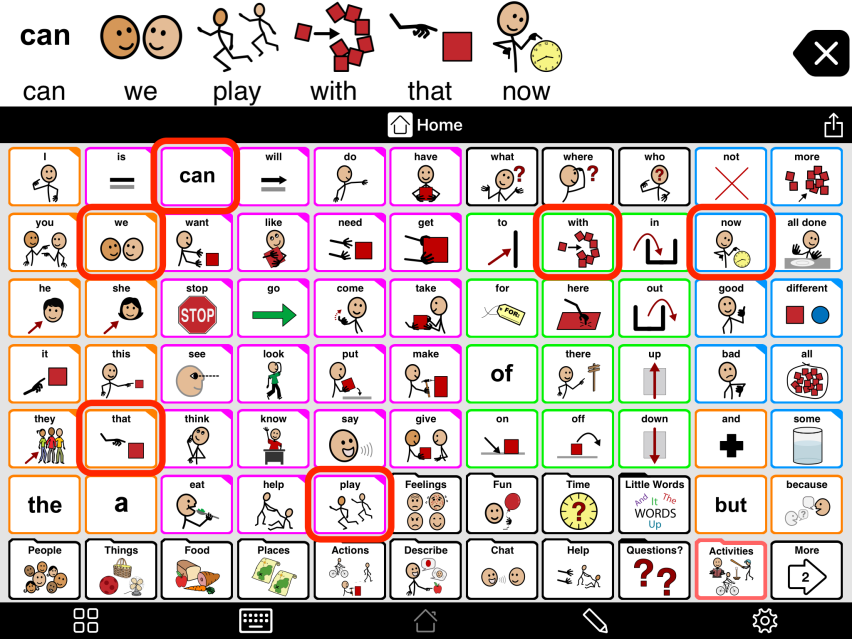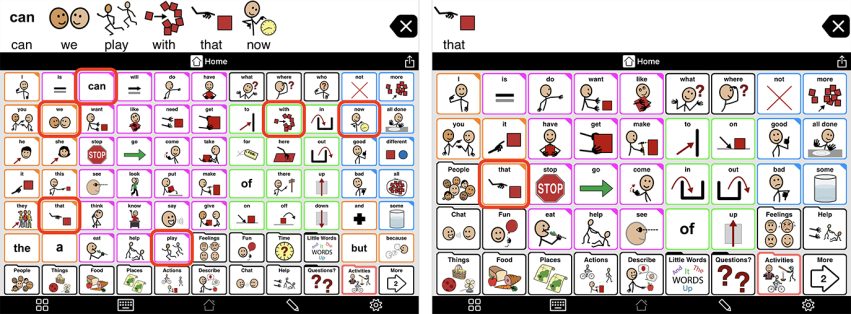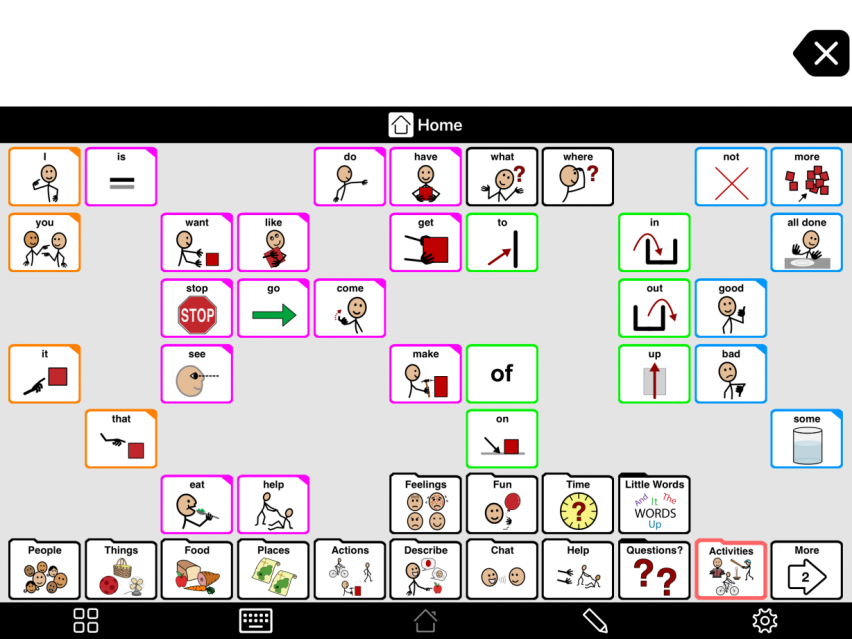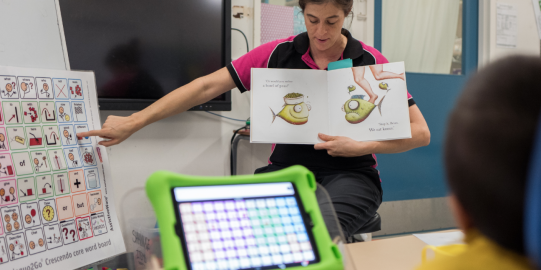Giving an AAC learner MORE words is so beneficial. It gives them more to say, and allows them to build language.
Considerations for people with physical and vision difficulties
Some AAC users have physical or vision difficulties. It may take some work to find the best grid size and settings for them.
AAC learners with physical and/or visual difficulties may not be able to see and touch the buttons on a larger grid size. We may need to choose a smaller grid size.
But first, here are seven options to explore, to help maximize the amount of language available on each page:
- Try a larger 12.9 inch iPad Pro. The extra size may help improve access.
- For users who have trouble physically accessing the device or accurately hitting buttons, try using tools such as mounting systems, styluses, or key guards.
- For users who have a tremor or tend to accidentally brush buttons next to the one they want, try using alternative access settings. In Proloquo2Go, you can set a Hold Duration or enable Select on Release.
- You can also try increasing the space between buttons.
- For Proloquo2Go users who have visual impairments but good fine motor skills, consider using Select on Release with auditory cues.
- For users with visual impairments, consider adjusting the appearance so there is a higher contrast between the page background and the buttons. Increasing the space between buttons also helps them stand out better for some people with cortical visual impairment.
- For users with severe motor impairments that make it very difficult to hit buttons, consider scanning and switching as an access method. Proloquo2Go supports auditory scanning for users who also have visual impairments.
If you need further information on any of these options, please contact our support team.
For Help and Support articles on alternative access, please click here.
It may be a trial and error process. But if you take the time now, your AAC user can have access to more language from the start!
Feeling overwhelmed
It is not uncommon to feel overwhelmed when you first start using an AAC system with many buttons. You might be afraid the page is too busy. You might feel you need to hunt and peck to find the words you need. Perhaps you worry, how will the user manage this?
The best way to overcome these feelings is to START using the grid. Get to know your AAC system! Model as soon and as often as you can. The more you use the grid, the easier it will become. You may only model or point to one word on the grid at a time. You may make mistakes. You might not always find the word you need. This is all part of the process of learning an AAC system and modeling regularly for an AAC user. Get all team members on board and support each other as you model. Allow yourself time to learn the grid. Don’t give up too soon!
Some people find a light-tech paper copy of their grid helpful. You can print the Proloquo2Go Crescendo 7x11 core word boards and posters. Alternatively, you can make a screen capture of the home page of your AAC system and print this out to use. Many people find that they make fewer errors pointing to words and word combinations on these light-tech core word boards. It also makes it easier when you go back to use the iPad.
If you are using Proloquo2Go, you may try using Progressive Language, introduced in version 5. This feature allows you to hide or mask some buttons to start. As the user develops language, you can gradually reintroduce them. It is an excellent way for an AAC user to start on a larger grid size. As you reveal new words, words the user has already learned stay in the same place.
